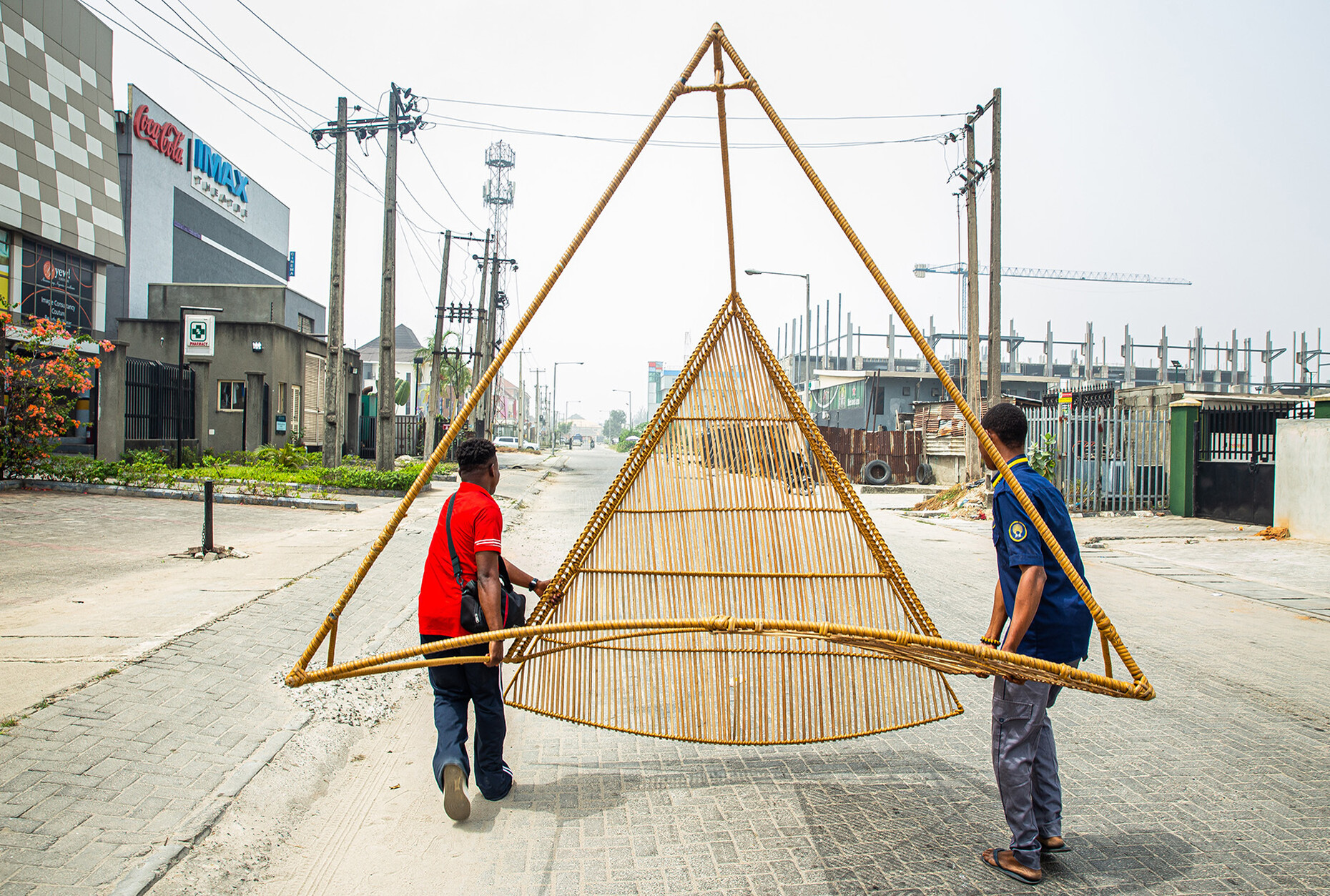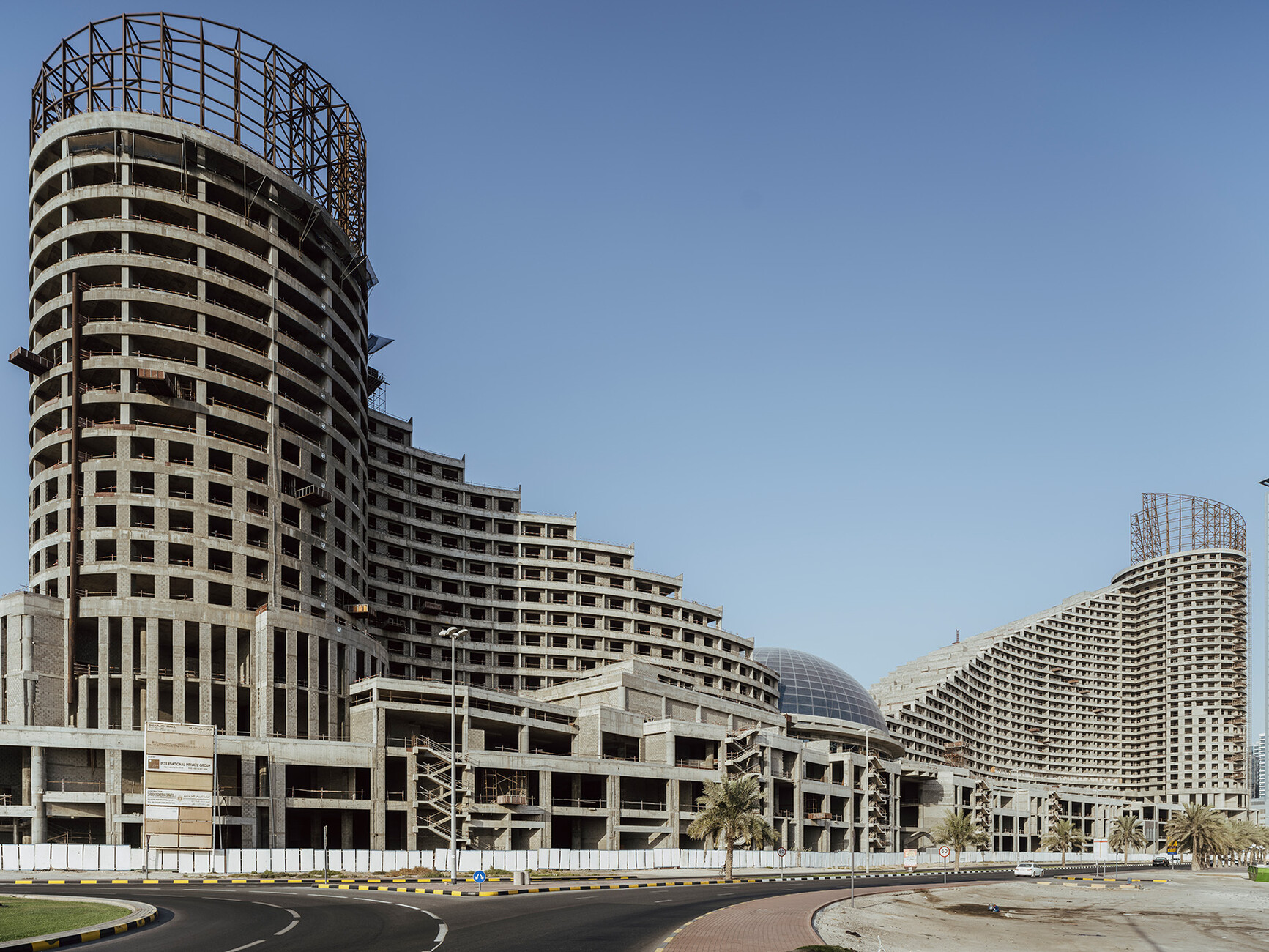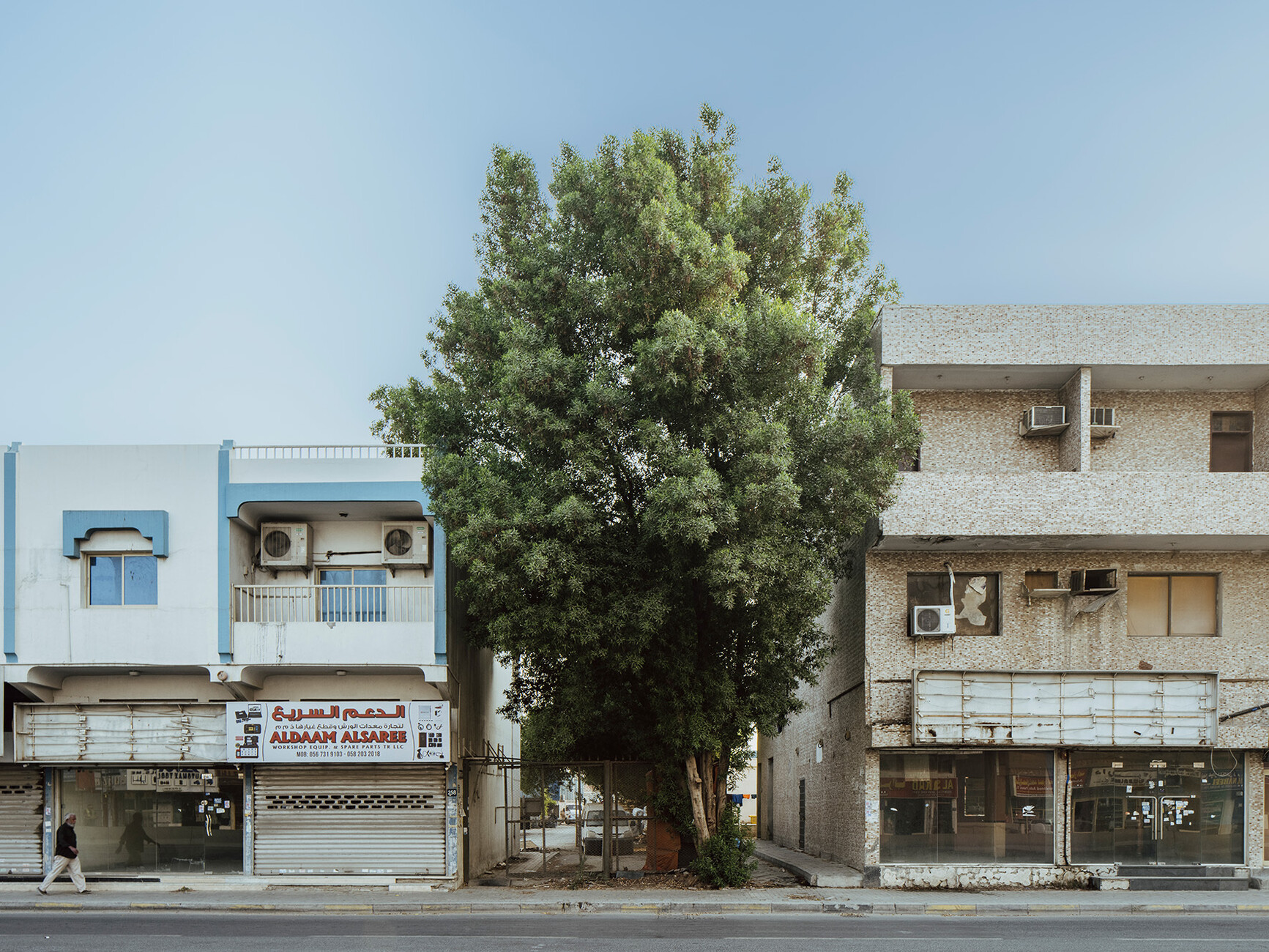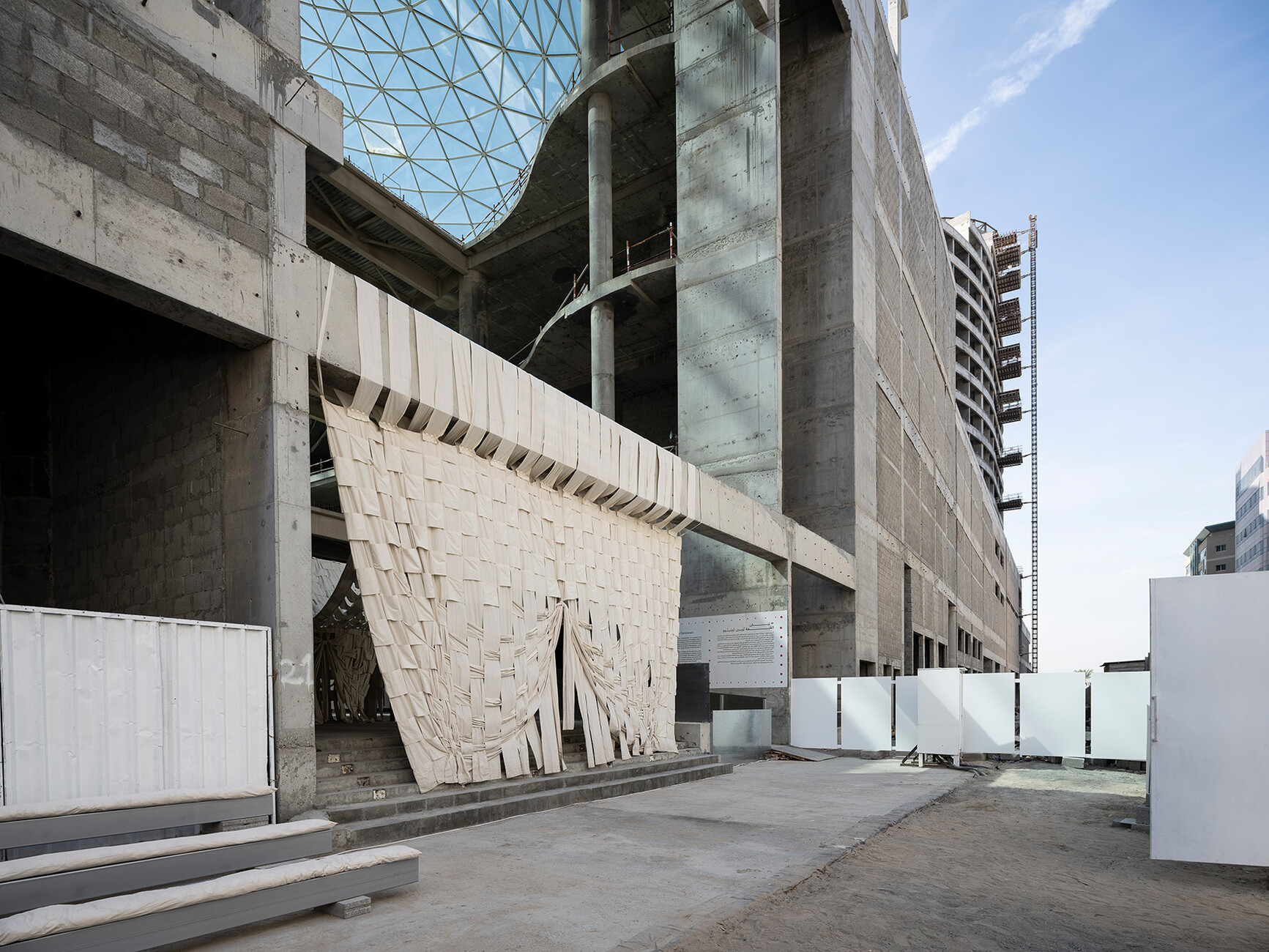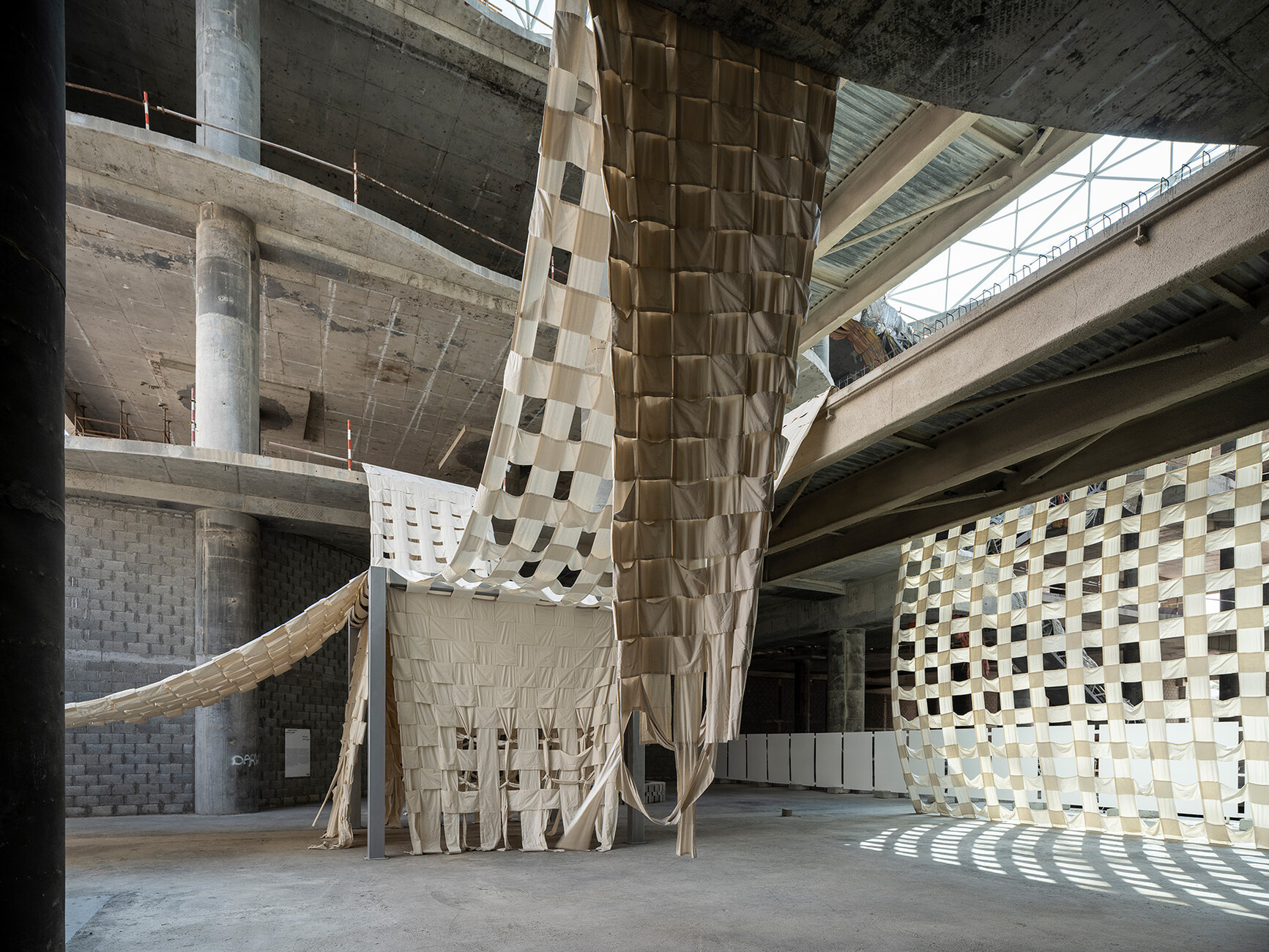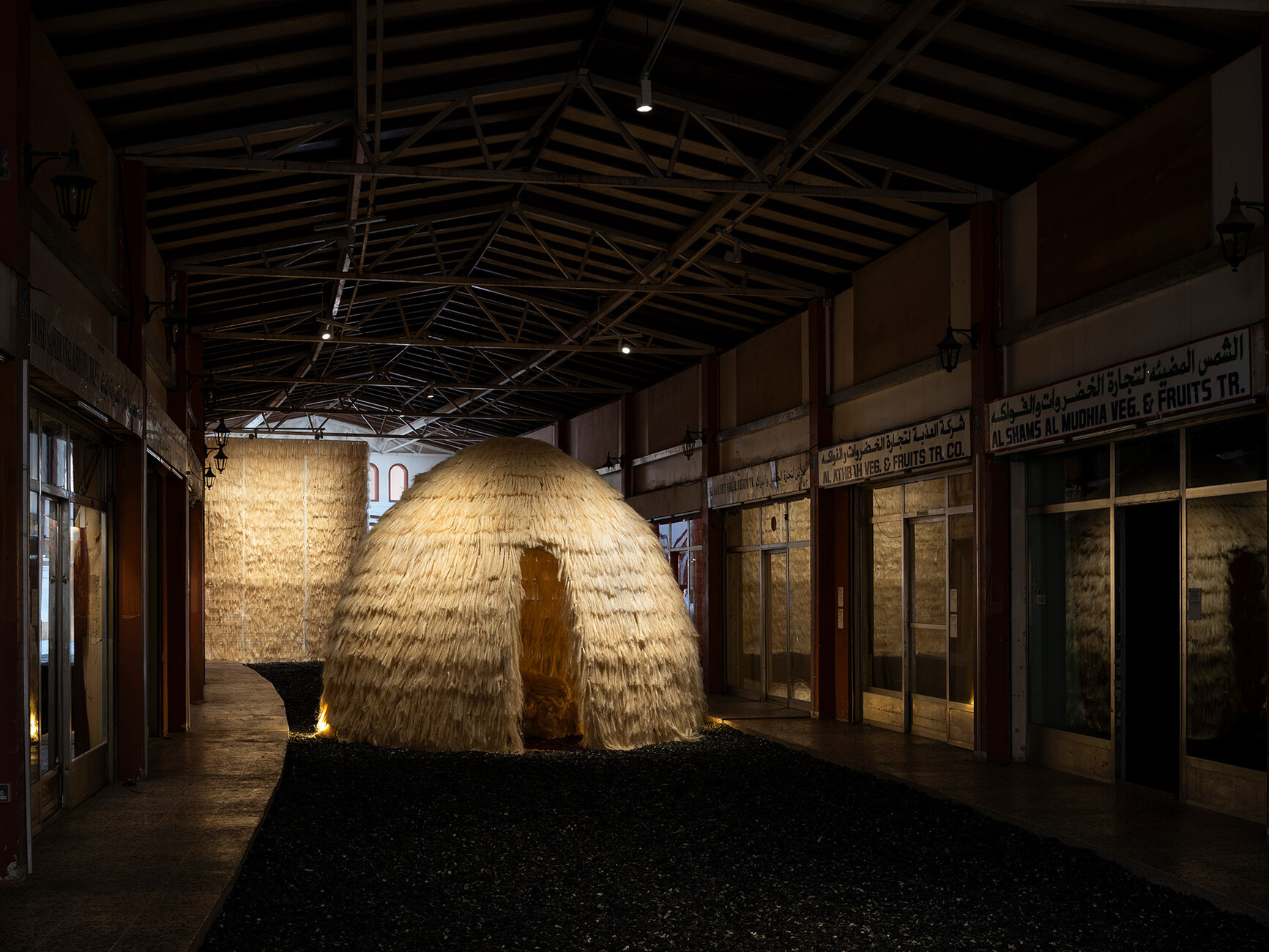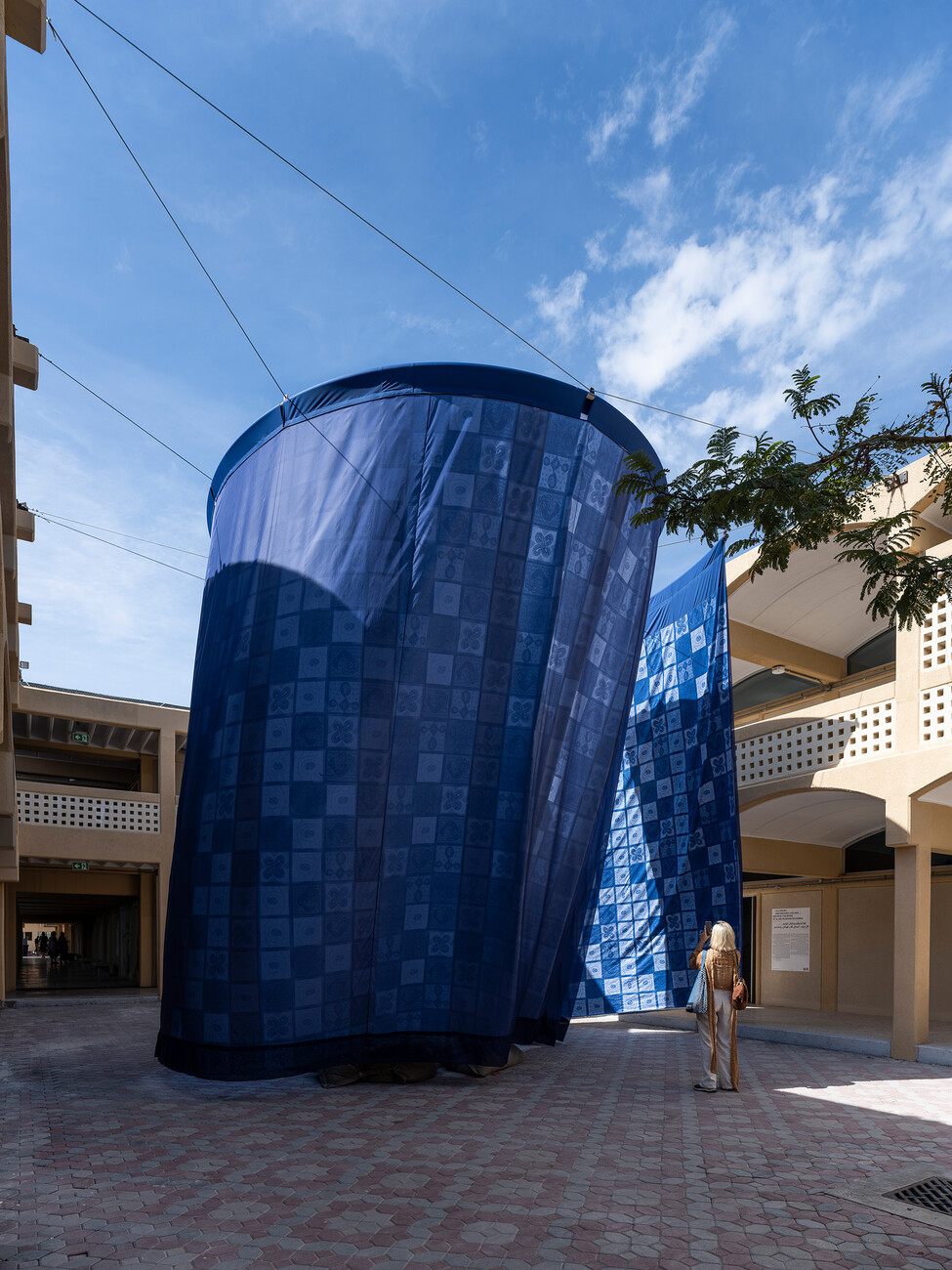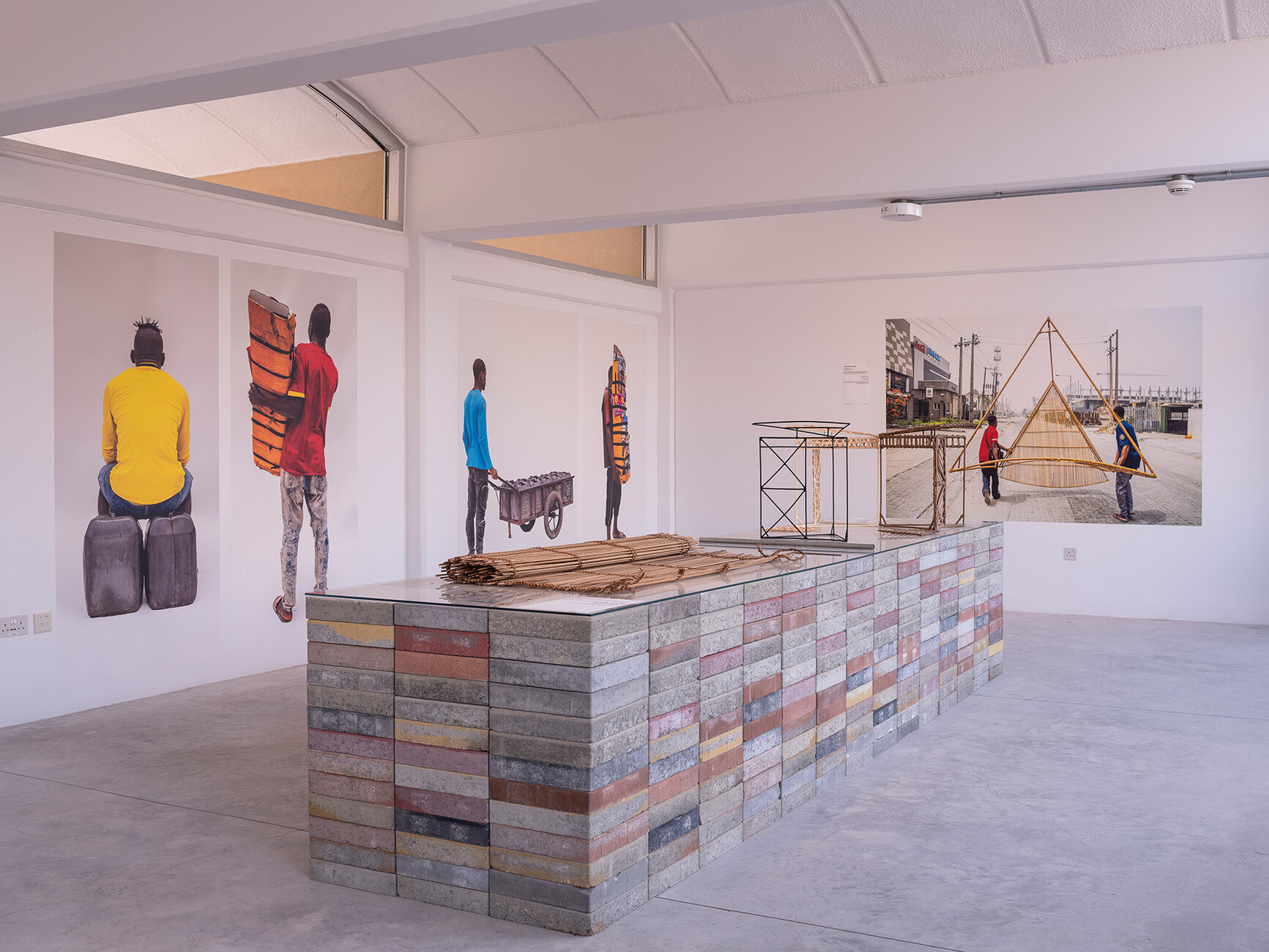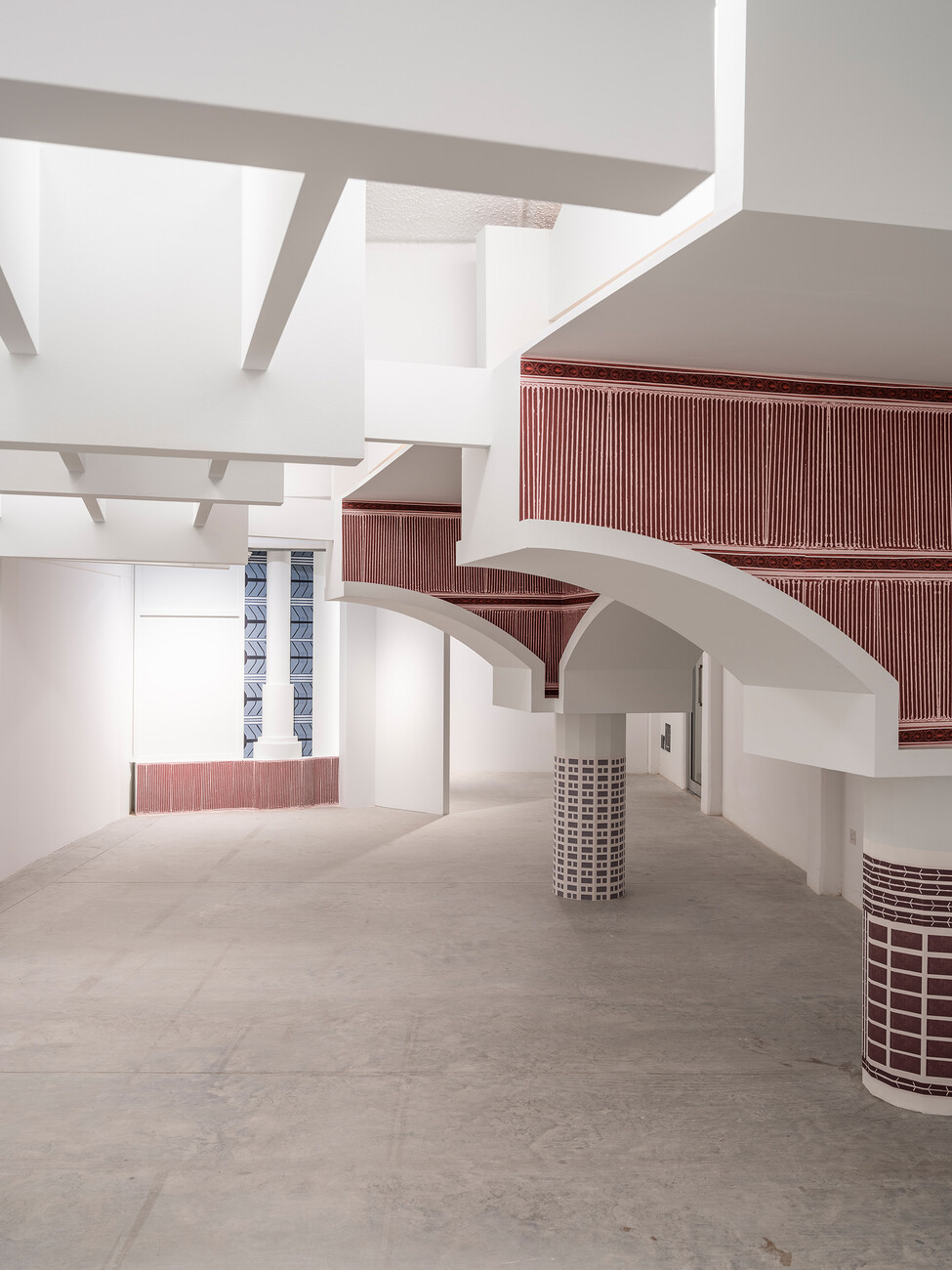The beauty of impermanence
Since the end of the 20th century, the United Arab Emirates and their ruling families have increasingly invested the profits from the oil trade in education and culture. Sharjah, the third largest of the seven emirates, is no exception. An art biennial has been held there since 1993, which has since gained a good international reputation. As the umbrella organisation, the Sharjah Art Foundation is responsible for both the art and architecture events. This foundation, led by the Emir's daughter Sheikha Hoor Al-Qasimi, has selected the young Nigerian architect Tosin Oshinowo as curator for this year's Architecture Triennial.
Florian Heilmeyer: First: Congratulations. You are curator for the 2nd edition of the Sharjah Architecture Triennial. You are an architect of Nigerian descent, you studied in Nigeria and worked in Europe before you started your own office in Lagos. I couldn’t find any link to Sharjah or the United Arabian Emirates in your CV. So I wanted to start the interview by finding out, how did you get involved?
Tosin Oshinowo: You are right, there is no direct link to Sharjah in my life before. I didn’t know of the Triennial before. For this curatorship, the Sharjah Architecture Triennial had a closed call for concepts, including me – which was very flattering and intriguing. I imagine I got contacted because I had co-curated the 2019 art biennial in Lagos, called “How to Build a Lagoon with Just a Bottle of Wine?”.
So you’ve never been to Sharjah before. Do you remember your first impression?
Tosin Oshinowo: Yes. So after I answered their call, just a few weeks later I got an invitation for an interview in Sharjah – and I was so pleasantly surprised. You know, in Dubai it’s all shiny and big, there is a strange emphasis on scale with big infrastructures, big buildings, skyscrapers and it all feels like you are in a computer game. (laughs) And then, coming into Sharjah, its almost like the opposite of Dubai. There is a dense urban fabric and a very human scale. As an architect who is caring very much about people, places, pedestrian infrastructure and interconnectedness, it was a lot more easy to build an instant relationship with this place. I think, for the foundation in their decision to name me as the curator, it was also really important to them to see that I had such an interest in and connection to this context in Sharjah.
Your headline is “The Beauty of Impermanence: An Architecture of Adaptability”. What can we expect from this edition?
Tosin Oshinowo: It will be about the notion of permanence, which is very strong in architecture and particularly in societies of the “Global North”, versus ideas of a beautiful impermanence – and the balance between these two poles. I come from Lagos, and in the “Global South”, issues of scarcity have created cultures of re-use, re-appropriation, of fantastic innovations and collaborations. There are practices who propose a new model of thinking born out of scarcity rather than out of abundance. And these practices celebrate for instance the use of natural materials. Notions of repair and reconstitution are instinctive, necessary and desirable. And they also embrace the idea that most things aren’t permanent, and that everything in our environment should adapt to and match our realities and needs, thereby resulting in a progressive and evolving architecture. You know, there is such a richness in traditional and older technologies, some are forgotten today, that a building could actually breathe: A traditional building of straw and adobe could actually bleed back into the earth and could be brought back out again. Architecture and civilization had a symbiotic relationship with ecology and nature. If you then look at the way we build in our modern world, there is such a fixation on the “forever”, and of course concrete is a defining factor for this. So if I look at where I come from and look at these traditions and old technologies, and it seems that they’ve existed in a better balance with ecology, with their environments and with our humanity, then I am asking: What lessons can be learned from that in relation to our modern day context.
Can you give an example?
Tosin Oshinowo: Well, if we look at the Arab region for instance, there is this historic element of their traditional architecture which is a system of wind towers, large ventilation shafts on the roofs that let the hot air stream out of the building. Without any technological devices these tunnels create a natural constant flow of fresh air in the building, and somehow with all our technological progress and our electric devices today, we have lost these elements in the architecture and substituted them with imported air conditioners. But actually, if you compare them, the old wind tunnels are the smarter system. So we can think about this, and it is not about something like “hey, lets go back to the good old days”, not at all. It should be more about what we as a modern society can learn from these traditions if we combine them with our current knowledge. And you find this in lots of traditional elements, like the narrow streets in historic Arab or African settlements, providing shadow, while the mud bricks store the heat and warm you in the evening. A lot of this knowledge has been pushed aside in the worldwide wake of colonialism and globalization. So I thought that especially in a setting with Dubai and Sharjah being so close to and so different from each other, it could be really interesting to talk about this.
”For a long time now, our world has developed on a linear trajectory, heavily consuming natural resources. Now we need to find a new balance and rethink how we live.“
So I understand you have invited 29 participants – mainly from the “Global South” – to this edition of the Triennale who are working along these lines of thought?
Tosin Oshinowo: Exactly. And more, because once I started to look for people who incorporate these ideas in their work, I started to develop three strands in discussion with the entire curatorial team and the exhibition designers. We will show the “Renewed Contextual” where it is about how traditional technologies and knowledge can inspire contemporary resilient design for today’s challenges. Then we have “Extraction Politics”, where its more about documenting, recording and making visible the extractive, wasteful processes that underlie design and which we should all be very aware of … where do our materials come from, how are they mined, extracted, crafted, transported and so on. And then a third strand became very apparent and we have called it “Intangible Bodies”. This is about projects and practitioners that deal with how natural landscapes and systems or cultural narratives, as well as empathy and spirituality, can be better integrated in our urban frameworks. Of course, all three strands are tightly interwoven. So it’s a pretty solid thread in the end, I hope. (laughs)
And you don’t just have 29 participants, you also have three interesting locations in Sharjah where the Triennale will take place.
Tosin Oshinowo: Yes, I am very happy about the locations. We have the Al-Qasimiyah school in the city. It’s a standardized typology, a prefabricated school building, that was built all over the region in the 1970s. Today only very few of these buildings remain and this one was only saved from demolition because the Art Foundation bought it as contemporary heritage. It’s a great example of adaptive architecture. This will be the Triennale’s main site with a lecture hall, book store, workshop and café, spread out over the building and its six courtyards and the open site on the back of the school. Then there is the old vegetable market, another modern building from the 1970s which stood empty and was bought by the foundation some years ago. It’s a beautiful covered, curved arcade with shops to both sides and a big parking lot around. It was designed by British engineers called Halcrow Group, so it does look a bit like a Tropical version of Spitalfields Market in London. It’s great because they even kept the shop names, so it feels a bit like they’ve just left a minute ago.
What do you hope to achieve with this Triennale, what should visitors take with them in the end?
Tosin Oshinowo: It is all one big adventure, a journey for all of us involved, and I think we all might be very surprised by the outcomes of all these interventions, exhibits and the accompanying program. But today, I would say that most of the discussions we had so far were all about balance and limitations. For a long time now, our world has developed on a linear trajectory, heavily consuming natural resources. Now we need to find a new balance and rethink how we live. It’s actually a big chance, to reflect on our value systems and what we really consider to be progress and prosperity – and how to combine these values with the conditions of scarcity and austerity which we inevitably face living on this planet. It would be fantastic if visitors, participants and a wider audience reading about this Triennale would take this opportunity to see this enormous change ahead of us as a creative chance to re-design our world.
Sharjah Architecture Triennial
The Beauty of Impermanence: An Architecture of Adaptation
November 11th, 2023 to March 10th, 2024
Locations all over Sharjah, United Arab Emirates







